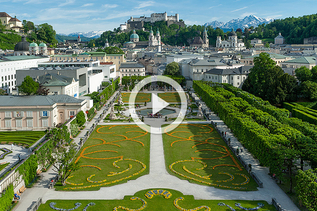
Salzburger Stier
Le Taureau de Salzbourg est l'un des derniers hornworks gothiques tardifs du monde encore conservés et se trouve sur la forteresse de Hohensalzburg. C'est aussi le plus ancien instrument de musique mécanique qui est joué régulièrement.
L'archevêque Léonard de Keutschach a commandé l'œuvre en cor en 1502. Comme dans d'autres villes, institutions et monastères, elle avait une fonction purement signalétique, par exemple pour réveiller les citoyens le matin et leur rappeler l'heure du coucher le soir. L'œuvre en cor initiale ne se composait que d'une boîte à vent, d'un soufflet et de 135 tuyaux. L'accord de Fa majeur de l'œuvre en cor ressemblait au rugissement d'un taureau, d'où est né le nom populaire de Taureau de Salzbourg.
Vers 1640, une orgue à rouleau a été ajoutée à l'œuvre en cor, qui jouait au départ uniquement le chant ancien. Un peu plus de 100 ans plus tard, le répertoire a été enrichi de 11 mélodies des maîtres de chapelle Eberlin et Leopold Mozart, de sorte que chaque mois avait sa propre mélodie.
Aujourd'hui, l'accord caractéristique de Fa majeur résonne suivi de l'une des 12 mélodies tous les jours juste après 7h, 11h et 18h, après le carillon de la vieille ville. Si le bruit ambiant n'est pas trop fort, on peut bien entendre le Taureau de Salzbourg depuis la place de la cathédrale ou la place de la Résidence.
Autres 'Taureaux de Salzbourg' :
Taureau de Salzbourg : Prix international de cabaret radio
La légende du laveur de taureau de Salzbourg
Impressions
Videos
Contact
Mönchsberg 34
5020 Salzburg







